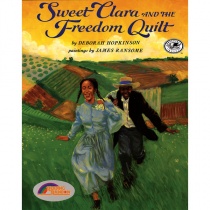This semester I was assigned to teach in an all-special education facility containing 163 students ages 5-21, located in urban Pittsburgh. Approximately 29% of the student body is female while the remainder is male. Almost all of the students are African American. There are two regional preschool classrooms located within the school. These two preschool classrooms total around 40 students. The remainder of the students who attend this school are considered to be either Autism Support, Life Skills Support or Multiple Disabled. The Secondary Life Skills classrooms focus on functional activities and vocational training. There are two vocational training programs one of which is school-based and the other which is community based. The school-based program contains the family and consumer science program which focuses on food, health and sanitation. The community-based program focuses on training students for jobs that are held within the community. Many of the students work at The Salvation Army and Achieva and continue to work after graduation.
All six of the Autism Support classrooms that teach students ages five through 14 run a very specific and structured program known as the Verbal Behavior Milestones Assessment and Placement Program. This is also widely known as the Applied Behavioral Analysis Support Initiative paired with a Verbal Behavior Initiative. Within this program, each student works individually with three different teachers focusing on skills such as Manding as well as responding to prompted requests. There are various types of verbal operants used such as tact, interverbal, echoic, receptive or listener responding, imitation and match to sample. Teachers and paraprofessionals undergo extensive training so that their data is reliable. When the students become fourteen years old, they enter into a more traditional vocational program where they work mostly on functional skills as well as verbal skills to prepare them for the real world.
The overall philosophy of this particular school is that “all students can learn and succeed but not on the same day.” In other words, in order for every student to learn efficiently and effectively, it takes time, patience and perseverance. The goal for every student is to be able to learn in a positive learning environment that focuses on the emotional, social and personal goals of every student. The school pledge is as follows:
We Pledge to: Do Our Best
We Pledge to: Learn
We Pledge to: Work Hard
We Pledge to: Keep our school safe
We Pledge to: Be positive and happy
We Pledge to: Respect one another
We Pledge to: Listen and try new things
Together, we can achieve “Excellence For All”
Every classroom at this school has a Special Education teacher as well as paraprofessionals. The paraprofessionals generally move from classroom to classroom depending on where they are most needed within the school. They also help escort the students from the buses to the classroom and the auditorium. Many of them do not have a background in education but have attended training sessions to work within the classroom. In addition, the support staff included nurses, personal care assistants, physical therapists, occupational therapists, transition counselors, social workers and speech therapists. Students with severe disabilities often have a nurse or a personal care assistant working with them at all times. In addition, almost all of the students in the school receive speech services twice a week from the speech teacher. Unfortunately, some of the older students do not receive speech anymore mainly because the speech teacher has too large of a caseload to handle all of the students at one time. Transition counselors generally work with many of the adolescent students in the upper level Autism Support classrooms and Primary Life Skills classrooms in helping them with functional and vocational skills.
In my particular classroom, which is an Autistic Support Classroom, there is one Special Education teacher and two paraprofessionals working at all times. There are six students in the classroom I was placed in. Three of the students are five years old, one student is seven years old and two students are eight years old. All students are diagnosed with Autism and a majority of them are nonverbal.
The classroom schedule is as follows. Before heading to their classrooms, students meet in the auditorium to have an all-school meeting filled with music and announcements. Students eat breakfast provided by the cafeteria around 8:15. Most of the other classrooms eat within the cafeteria. However, due to the age of my students, our students eat within the classroom. The first Manding session/Intensive Learning session begins at 8:40. Then every fifteen minutes, the students rotate to a different adult. At 10:15, the students travel down to the sensory room located on the third floor. At 10:30 students attend their special.
There are a variety of specials available to the students. Gym is on the fourth floor and is equipped with items such as jump ropes, basketball hoops and basketballs as well as a large open space for roller blading. Music is on the third floor and contains a carpeted area with puppets and a boom box for playing music. Art is on the second floor. And contains one large table for crafting. In addition, there are a variety of materials such as construction paper, crayons, scissors, glue and other crafting items. Students also attend library sessions. The library is quite spacious and is located on the second floor across the hallway from the Art classroom. The library has many colorful posters hanging on the walls and five wooden group tables for reading. Books are on the bookshelf and are sorted by genre. Lastly, students attend a healthy food session in the library once a week known as Power Up where they learn about and eat healthy snacks prepared by the staff.
After special, from 11:20-12:00, students eat their lunch. At 12:15 students go to the sensory room again or take a break in the room. At 12:30, students begin their Manding sessions again and this lasts until 1:00. At 1:00 students go to recess out in the foyer. There are toys to play with such as tricycles and a trampoline. The students are able to run around on a large carpeted area. At 1:30 the students begin to pack up to go home and around 1:45 the students travel down to the auditorium, located on the first floor adjacent to the cafeteria, to find their bus lines.
My Autistic Support classroom is somewhat colorful, although not much hangs on the walls except for some of the artwork and occasional bulletin boards and pictures. The most colorful wall is the rainbow wall that contains the schedule for each day. The wall is gridded into sections for every day of the week. In addition, the name of each student is represented multiple times on the board so that the teachers know where each student should be at a given time. This matrix helps to keep the class and the teachers organized.
The classroom is actually quit spacious for six small children and can easily fits four adults, including myself, inside. When you walk into the classroom you will find one circular table for eating lunch and three long rectangular tables around the classroom for working purposes. The teacher has her table for Manding sessions and the two paraprofessionals have their tables as well. Each student has an individual cart with their name on it that they use during their Manding sessions. These carts have the targeted goals near the top compartment and the untargeted goals in the bottom compartment. Adjacent to the classroom door is the bathroom that is equipped with one toilet, a changing table and a sink. Towards the back right corner of the classroom, there are beanbags and pillows and a T.V. for relaxing during break time. Many of the students take their iPad over to this area when they have completed their academic session. Everything is well organized within the classroom and there is very little clutter to prevent students from becoming over-stimulated.









